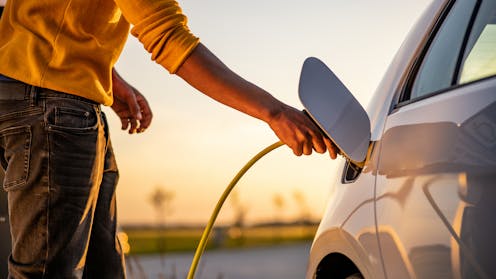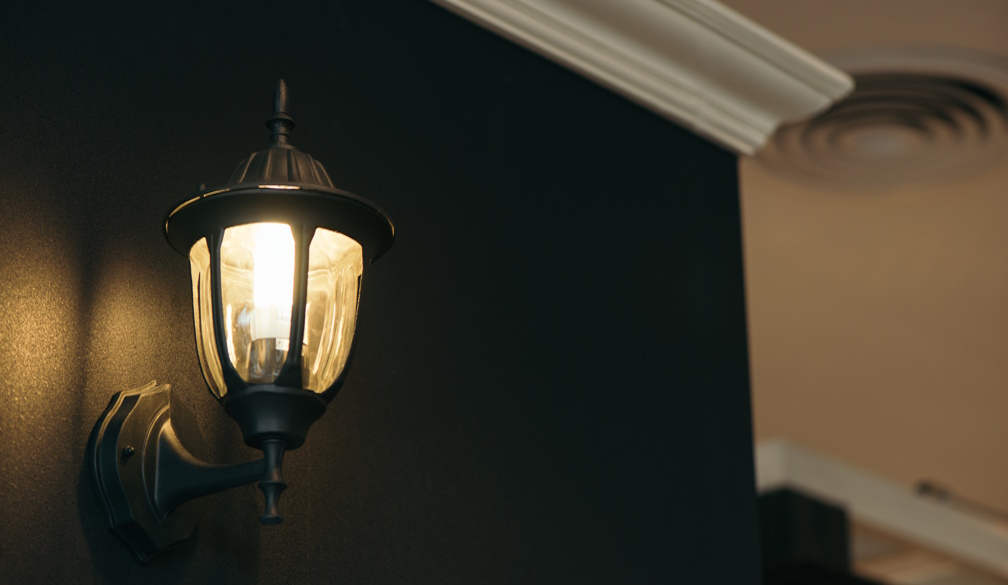What’s the cheapest way to charge your EV?
- Written by Hussein Dia, Professor of Transport Technology and Sustainability, Swinburne University of Technology

You’ll pay substantially less to charge an electric vehicle (EV) than if you were refuelling a petrol car to go the same distance.
But what often surprises new EV owners is how much the cost of a charge can vary. Using a smart charger to draw from rooftop solar at home can cost as little as 10 cents per kilowatt-hour — or almost nothing if you use “excess” solar that would otherwise be exported for a low feed-in tariff or not paid for at all. Charging from the grid off-peak might cost around 20 cents per kWh.
For an EV with a 60kWh battery, paying 10 cents per kWH means it would cost about A$6 for a full charge – enough to drive 300–400 kilometres. But if you’re on a road trip and want to charge quickly at an ultra-fast public charger, it might cost up to 60c per kWh – or about $36 for a 60kWh battery. By contrast, driving the same 350km in a new petrol car would cost almost $50 at Sydney’s recent average of 203.5c per litre – and likely more, given petrol cars often burn more fuel than their manufacturers claim.
It makes sense to charge your EV as cheaply as possible, given many drivers are switching to save on running costs and help tight household budgets. Here’s how.
How does EV charging work?
Charging an EV is like charging your phone, but on a larger scale.
How much driving range you gain per hour depends on the charging speed (measured in kilowatts) and the battery’s total capacity (measured in kilowatt-hours). On average, EVs use about 18kWh per 100km of driving, and most EVs have battery capacities between 40kWh and 120kWh.
There are three main charger levels. Each offers different speeds of charging and are designed for different situations.
EV drivers in Australia will come across three different charger speeds. Here’s how they work.Level 1: Trickle chargers (1.4–2.4kW)
Trickle chargers are essentially slow portable chargers plugged into a standard home power point. They add 10–15km of range per hour, making them best suited to overnight charging or emergency top-ups. On the plus side, these chargers come with the car and typically only need access to a standard plug.
Level 2: Top-up chargers (7–22kW)
Level 2 chargers include home wallbox chargers and destination chargers at hotels, car parks and shopping centres. These AC chargers are faster, adding about 40–120km of range per hour – great for when your car is parked for a while.
Level 3: Rapid chargers (25–350kW)
You’ll find these fast and ultra-fast DC chargers at motorway rest stops and along major travel routes. They can add 150–300km of range per hour. They’re ideal for long trips and short breaks with quick turnarounds, but they usually cost more.
Home charging is cheapest – if it’s available
If you live in a standalone house with off-street parking, home charging is generally the cheapest option. You can easily use Level 1 or 2 chargers at home, although Level 2 speeds require a wallbox charger. These can cost $1,000–2,000, plus installation.
If you have solar power, it makes sense to plug in your car on sunny days. Over the past 15 years, the value of home solar power exports has fallen 99% as the market hits saturation point. It’s now much more useful to just use the power at home.
Alternatively, charge from the grid overnight on off-peak rates. With the right electricity plan, charging at 20c per kWh is possible.
Not everyone can access cheap charging
Making the EV transition fair will mean ensuring broad access to affordable charging. Apartment residents and regional drivers may be forced to rely on more expensive public options due to a lack of access to dedicated chargers or the need for strata approval.
Community chargers, standardised pricing and smart grid incentives can help here. New South Wales is now offering grants to help apartment residents get EV-ready.
Public charging is fast and convenient – but watch the fees
Public charging stations often offer Level 2 destination chargers for longer stops and Level 3 rapid chargers for quick top-ups. There’s a wide range of pricing models and fees.
Australia’s major public charging networks include Chargefox, Evie, BP Pulse and Tesla Superchargers.
These networks may charge by kilowatt-hour or by time. Many apply idle or congestion fees to encourage drivers not to leave their cars plugged in after charging – especially at busy highway sites.
Level 3 fast chargers are great for topping up quickly, but speed usually means they cost more.
Apps such as PlugShare and NextCharge offer useful ways to find available chargers in real time and check the price.
It’s smart to limit charging to between 20% and 80% of your battery capacity. Charging slows down substantially when almost full, meaning more time and cost for relatively little gain.
Charging on the cheap
It’s hard to give definitive answers on the cheapest way to charge your EV, as costs can vary by charger type, location, electricity tariff, EV efficiency and driving habits. But it is possible to offer general estimates.
Timing, planning and avoiding unnecessary fees will help too, such as:
charging overnight at home using off-peak or time-of-use electricity tariffs. If you have solar, charge up while solar generation is highest
consider installing a smart charger so you can schedule and automate charging via an app
plan your longer trips carefully to avoid expensive or busy chargers.
Cheaper than petrol – and cheaper still with planning
Overall, EVs are more affordable to drive than petrol cars. But you can make the most of the technology by charging smartly.
Charging at home on solar or off-peak electricity offers the best value by far. Public charging adds flexibility but comes at a cost, especially at ultra-fast motorway sites. With a little planning, most drivers can avoid expensive options most of the time.
Making the EV transition fair will mean expanding access to affordable, reliable charging for everyone – not just those with off-street parking or rooftop solar.
Authors: Hussein Dia, Professor of Transport Technology and Sustainability, Swinburne University of Technology
Read more https://theconversation.com/whats-the-cheapest-way-to-charge-your-ev-262520



















